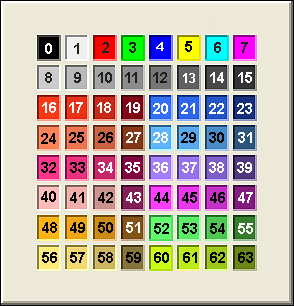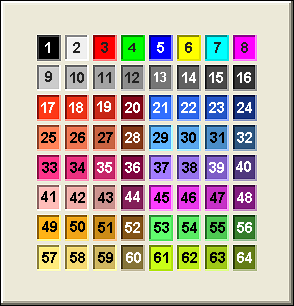Color Palette
The Color Palette is used in many panels, browsers, the Entity Editor and dialogs to specify the color of an entity.
This Color attribute is generally indicated by a small colored box next to the entity name; clicking on this box opens a Color Palette from which you can select a new color for that entity.

Figure 1. HyperWorks Desktop Color Palette

Figure 2. HyperMesh Color Palette